Glass Manufacturing
Detergents
Chemical Manufacturing
Sodium Bicarbonate Production
Pulp and Paper
Dense Soda Ash
Light Soda Ash
Soda Ash By-product
Construction
Automotive
Food and Beverage
Pharmaceuticals
Household Care
Natural Soda Ash
Synthetic Soda Ash
North America
Europe
South America
Asia Pacific
Middle East and Africa
North America Outlook (USD Billion, 2019-2035)
North America Soda Ash Market by Application Type
Glass Manufacturing
Detergents
Chemical Manufacturing
Sodium Bicarbonate Production
Pulp and Paper
North America Soda Ash Market by Type
Dense Soda Ash
Light Soda Ash
Soda Ash By-product
North America Soda Ash Market by End Use Type
Construction
Automotive
Food and Beverage
Pharmaceuticals
Household Care
North America Soda Ash Market by Source Type
Natural Soda Ash
Synthetic Soda Ash
North America Soda Ash Market by Regional Type
US
Canada
US Outlook (USD Billion, 2019-2035)
US Soda Ash Market by Application Type
Glass Manufacturing
Detergents
Chemical Manufacturing
Sodium Bicarbonate Production
Pulp and Paper
US Soda Ash Market by Type
Dense Soda Ash
Light Soda Ash
Soda Ash By-product
US Soda Ash Market by End Use Type
Construction
Automotive
Food and Beverage
Pharmaceuticals
Household Care
US Soda Ash Market by Source Type
Natural Soda Ash
Synthetic Soda Ash
CANADA Outlook (USD Billion, 2019-2035)
CANADA Soda Ash Market by Application Type
Glass Manufacturing
Detergents
Chemical Manufacturing
Sodium Bicarbonate Production
Pulp and Paper
CANADA Soda Ash Market by Type
Dense Soda Ash
Light Soda Ash
Soda Ash By-product
CANADA Soda Ash Market by End Use Type
Construction
Automotive
Food and Beverage
Pharmaceuticals
Household Care
CANADA Soda Ash Market by Source Type
Natural Soda Ash
Synthetic Soda Ash
Europe Outlook (USD Billion, 2019-2035)
Europe Soda Ash Market by Application Type
Glass Manufacturing
Detergents
Chemical Manufacturing
Sodium Bicarbonate Production
Pulp and Paper
Europe Soda Ash Market by Type
Dense Soda Ash
Light Soda Ash
Soda Ash By-product
Europe Soda Ash Market by End Use Type
Construction
Automotive
Food and Beverage
Pharmaceuticals
Household Care
Europe Soda Ash Market by Source Type
Natural Soda Ash
Synthetic Soda Ash
Europe Soda Ash Market by Regional Type
Germany
UK
France
Russia
Italy
Spain
Rest of Europe
GERMANY Outlook (USD Billion, 2019-2035)
GERMANY Soda Ash Market by Application Type
Glass Manufacturing
Detergents
Chemical Manufacturing
Sodium Bicarbonate Production
Pulp and Paper
GERMANY Soda Ash Market by Type
Dense Soda Ash
Light Soda Ash
Soda Ash By-product
GERMANY Soda Ash Market by End Use Type
Construction
Automotive
Food and Beverage
Pharmaceuticals
Household Care
GERMANY Soda Ash Market by Source Type
Natural Soda Ash
Synthetic Soda Ash
UK Outlook (USD Billion, 2019-2035)
UK Soda Ash Market by Application Type
Glass Manufacturing
Detergents
Chemical Manufacturing
Sodium Bicarbonate Production
Pulp and Paper
UK Soda Ash Market by Type
Dense Soda Ash
Light Soda Ash
Soda Ash By-product
UK Soda Ash Market by End Use Type
Construction
Automotive
Food and Beverage
Pharmaceuticals
Household Care
UK Soda Ash Market by Source Type
Natural Soda Ash
Synthetic Soda Ash
FRANCE Outlook (USD Billion, 2019-2035)
FRANCE Soda Ash Market by Application Type
Glass Manufacturing
Detergents
Chemical Manufacturing
Sodium Bicarbonate Production
Pulp and Paper
FRANCE Soda Ash Market by Type
Dense Soda Ash
Light Soda Ash
Soda Ash By-product
FRANCE Soda Ash Market by End Use Type
Construction
Automotive
Food and Beverage
Pharmaceuticals
Household Care
FRANCE Soda Ash Market by Source Type
Natural Soda Ash
Synthetic Soda Ash
RUSSIA Outlook (USD Billion, 2019-2035)
RUSSIA Soda Ash Market by Application Type
Glass Manufacturing
Detergents
Chemical Manufacturing
Sodium Bicarbonate Production
Pulp and Paper
RUSSIA Soda Ash Market by Type
Dense Soda Ash
Light Soda Ash
Soda Ash By-product
RUSSIA Soda Ash Market by End Use Type
Construction
Automotive
Food and Beverage
Pharmaceuticals
Household Care
RUSSIA Soda Ash Market by Source Type
Natural Soda Ash
Synthetic Soda Ash
ITALY Outlook (USD Billion, 2019-2035)
ITALY Soda Ash Market by Application Type
Glass Manufacturing
Detergents
Chemical Manufacturing
Sodium Bicarbonate Production
Pulp and Paper
ITALY Soda Ash Market by Type
Dense Soda Ash
Light Soda Ash
Soda Ash By-product
ITALY Soda Ash Market by End Use Type
Construction
Automotive
Food and Beverage
Pharmaceuticals
Household Care
ITALY Soda Ash Market by Source Type
Natural Soda Ash
Synthetic Soda Ash
SPAIN Outlook (USD Billion, 2019-2035)
SPAIN Soda Ash Market by Application Type
Glass Manufacturing
Detergents
Chemical Manufacturing
Sodium Bicarbonate Production
Pulp and Paper
SPAIN Soda Ash Market by Type
Dense Soda Ash
Light Soda Ash
Soda Ash By-product
SPAIN Soda Ash Market by End Use Type
Construction
Automotive
Food and Beverage
Pharmaceuticals
Household Care
SPAIN Soda Ash Market by Source Type
Natural Soda Ash
Synthetic Soda Ash
REST OF EUROPE Outlook (USD Billion, 2019-2035)
REST OF EUROPE Soda Ash Market by Application Type
Glass Manufacturing
Detergents
Chemical Manufacturing
Sodium Bicarbonate Production
Pulp and Paper
REST OF EUROPE Soda Ash Market by Type
Dense Soda Ash
Light Soda Ash
Soda Ash By-product
REST OF EUROPE Soda Ash Market by End Use Type
Construction
Automotive
Food and Beverage
Pharmaceuticals
Household Care
REST OF EUROPE Soda Ash Market by Source Type
Natural Soda Ash
Synthetic Soda Ash
APAC Outlook (USD Billion, 2019-2035)
APAC Soda Ash Market by Application Type
Glass Manufacturing
Detergents
Chemical Manufacturing
Sodium Bicarbonate Production
Pulp and Paper
APAC Soda Ash Market by Type
Dense Soda Ash
Light Soda Ash
Soda Ash By-product
APAC Soda Ash Market by End Use Type
Construction
Automotive
Food and Beverage
Pharmaceuticals
Household Care
APAC Soda Ash Market by Source Type
Natural Soda Ash
Synthetic Soda Ash
APAC Soda Ash Market by Regional Type
China
India
Japan
South Korea
Malaysia
Thailand
Indonesia
Rest of APAC
CHINA Outlook (USD Billion, 2019-2035)
CHINA Soda Ash Market by Application Type
Glass Manufacturing
Detergents
Chemical Manufacturing
Sodium Bicarbonate Production
Pulp and Paper
CHINA Soda Ash Market by Type
Dense Soda Ash
Light Soda Ash
Soda Ash By-product
CHINA Soda Ash Market by End Use Type
Construction
Automotive
Food and Beverage
Pharmaceuticals
Household Care
CHINA Soda Ash Market by Source Type
Natural Soda Ash
Synthetic Soda Ash
INDIA Outlook (USD Billion, 2019-2035)
INDIA Soda Ash Market by Application Type
Glass Manufacturing
Detergents
Chemical Manufacturing
Sodium Bicarbonate Production
Pulp and Paper
INDIA Soda Ash Market by Type
Dense Soda Ash
Light Soda Ash
Soda Ash By-product
INDIA Soda Ash Market by End Use Type
Construction
Automotive
Food and Beverage
Pharmaceuticals
Household Care
INDIA Soda Ash Market by Source Type
Natural Soda Ash
Synthetic Soda Ash
JAPAN Outlook (USD Billion, 2019-2035)
JAPAN Soda Ash Market by Application Type
Glass Manufacturing
Detergents
Chemical Manufacturing
Sodium Bicarbonate Production
Pulp and Paper
JAPAN Soda Ash Market by Type
Dense Soda Ash
Light Soda Ash
Soda Ash By-product
JAPAN Soda Ash Market by End Use Type
Construction
Automotive
Food and Beverage
Pharmaceuticals
Household Care
JAPAN Soda Ash Market by Source Type
Natural Soda Ash
Synthetic Soda Ash
SOUTH KOREA Outlook (USD Billion, 2019-2035)
SOUTH KOREA Soda Ash Market by Application Type
Glass Manufacturing
Detergents
Chemical Manufacturing
Sodium Bicarbonate Production
Pulp and Paper
SOUTH KOREA Soda Ash Market by Type
Dense Soda Ash
Light Soda Ash
Soda Ash By-product
SOUTH KOREA Soda Ash Market by End Use Type
Construction
Automotive
Food and Beverage
Pharmaceuticals
Household Care
SOUTH KOREA Soda Ash Market by Source Type
Natural Soda Ash
Synthetic Soda Ash
MALAYSIA Outlook (USD Billion, 2019-2035)
MALAYSIA Soda Ash Market by Application Type
Glass Manufacturing
Detergents
Chemical Manufacturing
Sodium Bicarbonate Production
Pulp and Paper
MALAYSIA Soda Ash Market by Type
Dense Soda Ash
Light Soda Ash
Soda Ash By-product
MALAYSIA Soda Ash Market by End Use Type
Construction
Automotive
Food and Beverage
Pharmaceuticals
Household Care
MALAYSIA Soda Ash Market by Source Type
Natural Soda Ash
Synthetic Soda Ash
THAILAND Outlook (USD Billion, 2019-2035)
THAILAND Soda Ash Market by Application Type
Glass Manufacturing
Detergents
Chemical Manufacturing
Sodium Bicarbonate Production
Pulp and Paper
THAILAND Soda Ash Market by Type
Dense Soda Ash
Light Soda Ash
Soda Ash By-product
THAILAND Soda Ash Market by End Use Type
Construction
Automotive
Food and Beverage
Pharmaceuticals
Household Care
THAILAND Soda Ash Market by Source Type
Natural Soda Ash
Synthetic Soda Ash
INDONESIA Outlook (USD Billion, 2019-2035)
INDONESIA Soda Ash Market by Application Type
Glass Manufacturing
Detergents
Chemical Manufacturing
Sodium Bicarbonate Production
Pulp and Paper
INDONESIA Soda Ash Market by Type
Dense Soda Ash
Light Soda Ash
Soda Ash By-product
INDONESIA Soda Ash Market by End Use Type
Construction
Automotive
Food and Beverage
Pharmaceuticals
Household Care
INDONESIA Soda Ash Market by Source Type
Natural Soda Ash
Synthetic Soda Ash
REST OF APAC Outlook (USD Billion, 2019-2035)
REST OF APAC Soda Ash Market by Application Type
Glass Manufacturing
Detergents
Chemical Manufacturing
Sodium Bicarbonate Production
Pulp and Paper
REST OF APAC Soda Ash Market by Type
Dense Soda Ash
Light Soda Ash
Soda Ash By-product
REST OF APAC Soda Ash Market by End Use Type
Construction
Automotive
Food and Beverage
Pharmaceuticals
Household Care
REST OF APAC Soda Ash Market by Source Type
Natural Soda Ash
Synthetic Soda Ash
South America Outlook (USD Billion, 2019-2035)
South America Soda Ash Market by Application Type
Glass Manufacturing
Detergents
Chemical Manufacturing
Sodium Bicarbonate Production
Pulp and Paper
South America Soda Ash Market by Type
Dense Soda Ash
Light Soda Ash
Soda Ash By-product
South America Soda Ash Market by End Use Type
Construction
Automotive
Food and Beverage
Pharmaceuticals
Household Care
South America Soda Ash Market by Source Type
Natural Soda Ash
Synthetic Soda Ash
South America Soda Ash Market by Regional Type
Brazil
Mexico
Argentina
Rest of South America
BRAZIL Outlook (USD Billion, 2019-2035)
BRAZIL Soda Ash Market by Application Type
Glass Manufacturing
Detergents
Chemical Manufacturing
Sodium Bicarbonate Production
Pulp and Paper
BRAZIL Soda Ash Market by Type
Dense Soda Ash
Light Soda Ash
Soda Ash By-product
BRAZIL Soda Ash Market by End Use Type
Construction
Automotive
Food and Beverage
Pharmaceuticals
Household Care
BRAZIL Soda Ash Market by Source Type
Natural Soda Ash
Synthetic Soda Ash
MEXICO Outlook (USD Billion, 2019-2035)
MEXICO Soda Ash Market by Application Type
Glass Manufacturing
Detergents
Chemical Manufacturing
Sodium Bicarbonate Production
Pulp and Paper
MEXICO Soda Ash Market by Type
Dense Soda Ash
Light Soda Ash
Soda Ash By-product
MEXICO Soda Ash Market by End Use Type
Construction
Automotive
Food and Beverage
Pharmaceuticals
Household Care
MEXICO Soda Ash Market by Source Type
Natural Soda Ash
Synthetic Soda Ash
ARGENTINA Outlook (USD Billion, 2019-2035)
ARGENTINA Soda Ash Market by Application Type
Glass Manufacturing
Detergents
Chemical Manufacturing
Sodium Bicarbonate Production
Pulp and Paper
ARGENTINA Soda Ash Market by Type
Dense Soda Ash
Light Soda Ash
Soda Ash By-product
ARGENTINA Soda Ash Market by End Use Type
Construction
Automotive
Food and Beverage
Pharmaceuticals
Household Care
ARGENTINA Soda Ash Market by Source Type
Natural Soda Ash
Synthetic Soda Ash
REST OF SOUTH AMERICA Outlook (USD Billion, 2019-2035)
REST OF SOUTH AMERICA Soda Ash Market by Application Type
Glass Manufacturing
Detergents
Chemical Manufacturing
Sodium Bicarbonate Production
Pulp and Paper
REST OF SOUTH AMERICA Soda Ash Market by Type
Dense Soda Ash
Light Soda Ash
Soda Ash By-product
REST OF SOUTH AMERICA Soda Ash Market by End Use Type
Construction
Automotive
Food and Beverage
Pharmaceuticals
Household Care
REST OF SOUTH AMERICA Soda Ash Market by Source Type
Natural Soda Ash
Synthetic Soda Ash
MEA Outlook (USD Billion, 2019-2035)
MEA Soda Ash Market by Application Type
Glass Manufacturing
Detergents
Chemical Manufacturing
Sodium Bicarbonate Production
Pulp and Paper
MEA Soda Ash Market by Type
Dense Soda Ash
Light Soda Ash
Soda Ash By-product
MEA Soda Ash Market by End Use Type
Construction
Automotive
Food and Beverage
Pharmaceuticals
Household Care
MEA Soda Ash Market by Source Type
Natural Soda Ash
Synthetic Soda Ash
MEA Soda Ash Market by Regional Type
GCC Countries
South Africa
Rest of MEA
GCC COUNTRIES Outlook (USD Billion, 2019-2035)
GCC COUNTRIES Soda Ash Market by Application Type
Glass Manufacturing
Detergents
Chemical Manufacturing
Sodium Bicarbonate Production
Pulp and Paper
GCC COUNTRIES Soda Ash Market by Type
Dense Soda Ash
Light Soda Ash
Soda Ash By-product
GCC COUNTRIES Soda Ash Market by End Use Type
Construction
Automotive
Food and Beverage
Pharmaceuticals
Household Care
GCC COUNTRIES Soda Ash Market by Source Type
Natural Soda Ash
Synthetic Soda Ash
SOUTH AFRICA Outlook (USD Billion, 2019-2035)
SOUTH AFRICA Soda Ash Market by Application Type
Glass Manufacturing
Detergents
Chemical Manufacturing
Sodium Bicarbonate Production
Pulp and Paper
SOUTH AFRICA Soda Ash Market by Type
Dense Soda Ash
Light Soda Ash
Soda Ash By-product
SOUTH AFRICA Soda Ash Market by End Use Type
Construction
Automotive
Food and Beverage
Pharmaceuticals
Household Care
SOUTH AFRICA Soda Ash Market by Source Type
Natural Soda Ash
Synthetic Soda Ash
REST OF MEA Outlook (USD Billion, 2019-2035)
REST OF MEA Soda Ash Market by Application Type
Glass Manufacturing
Detergents
Chemical Manufacturing
Sodium Bicarbonate Production
Pulp and Paper
REST OF MEA Soda Ash Market by Type
Dense Soda Ash
Light Soda Ash
Soda Ash By-product
REST OF MEA Soda Ash Market by End Use Type
Construction
Automotive
Food and Beverage
Pharmaceuticals
Household Care
REST OF MEA Soda Ash Market by Source Type
Natural Soda Ash
Synthetic Soda Ash

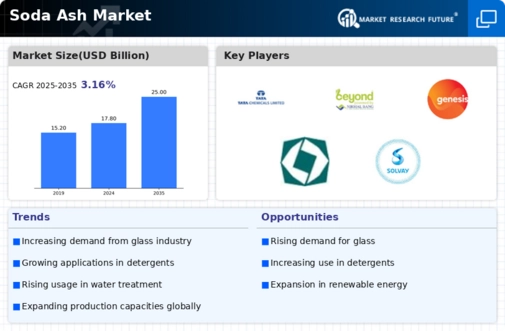
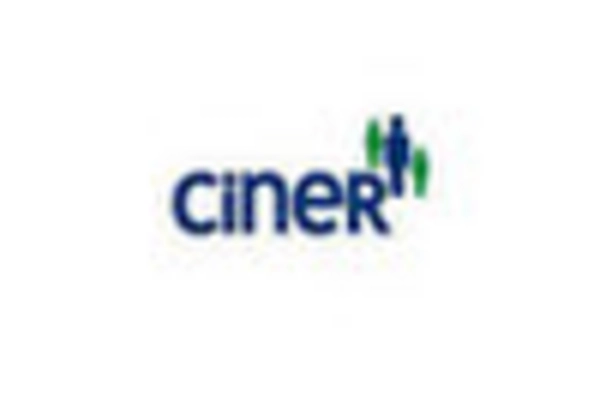

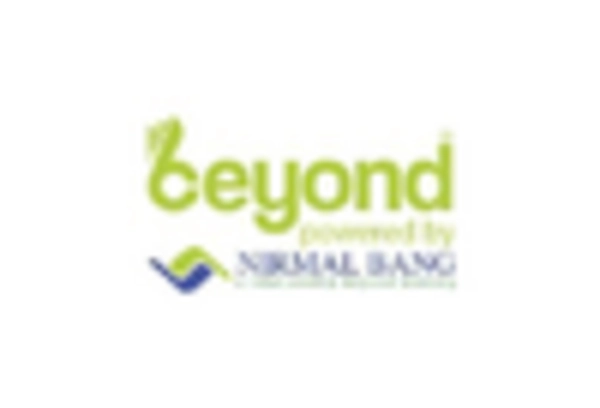
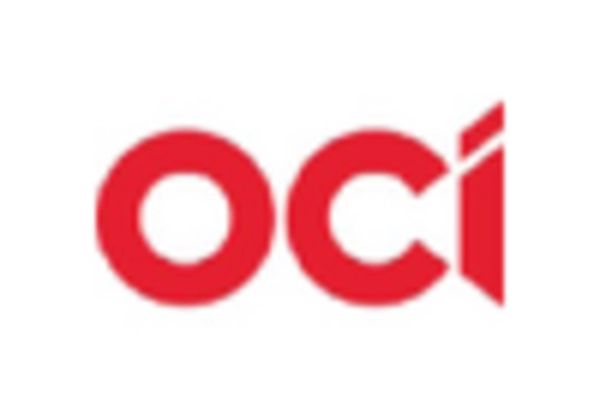
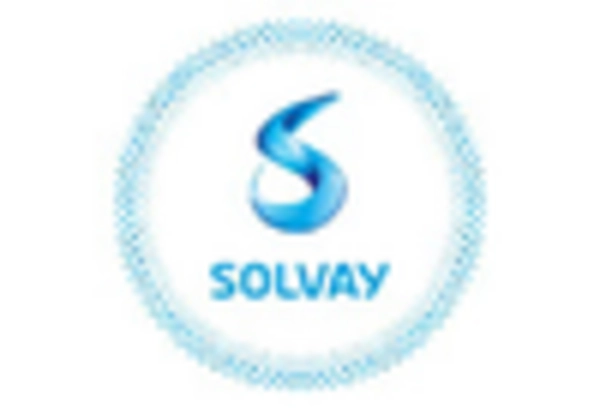










Leave a Comment